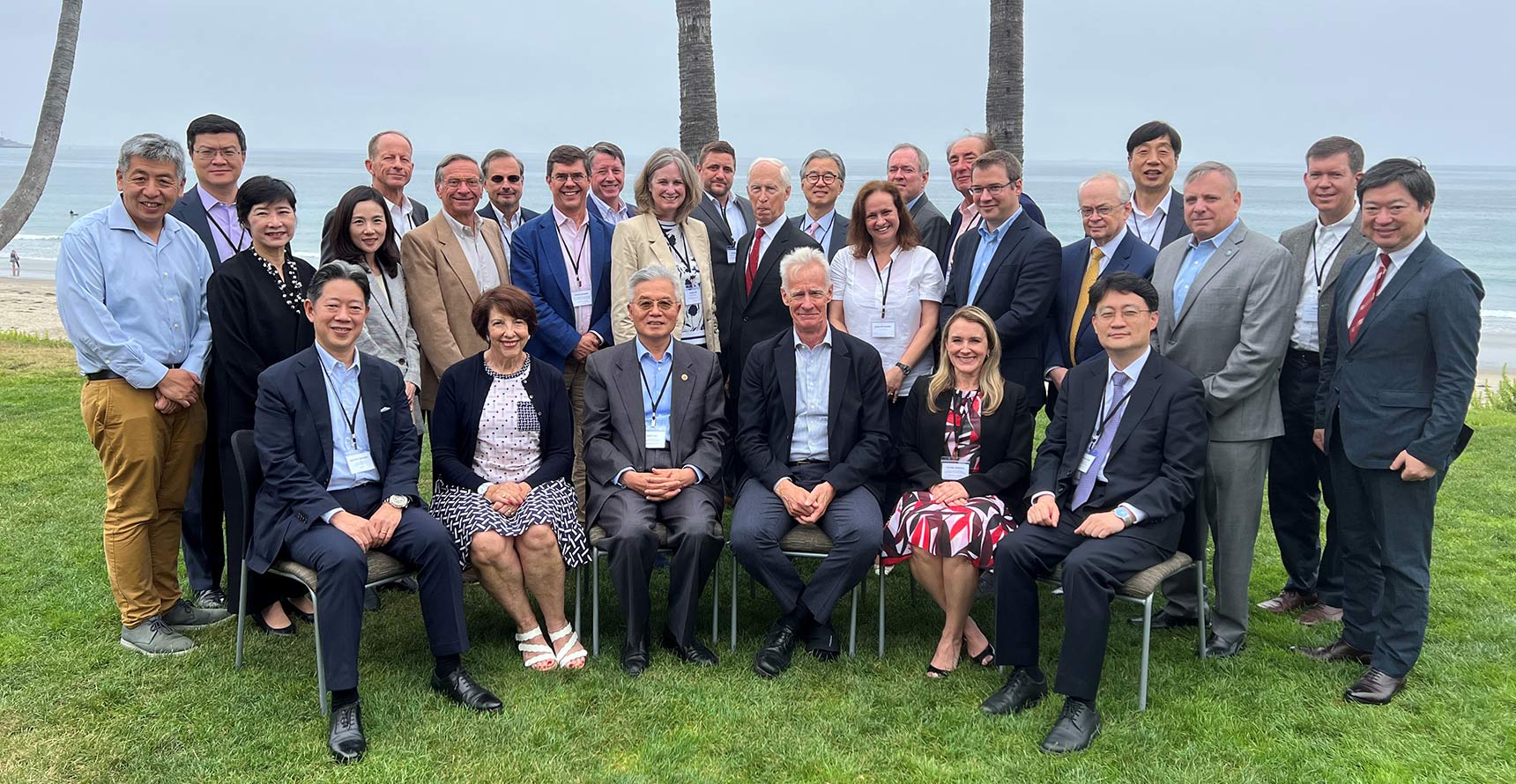Cold War or Hot Peace? Troubling Trends in Northeast Asia

After the end of the Cold War, many hoped for an “end of history,” with substantially reduced risks of conflict. While several promising developments occurred in East Asia after 1990, three decades later, hopes for a perpetual peace seem dashed. Arms races have replaced arms control, nuclear weapons menace the Korean peninsula more than ever, a grinding war of attrition is being fought in Ukraine, and China has moved from being a “responsible stakeholder” to a “strategic competitor” if not outright adversary.
The Defense Information Sharing (DIS) and Northeast Asia Cooperation Dialogues (NEACD) convened in La Jolla in July 2023 against this troubled backdrop. IGCC established NEACD in 1993 after the end of the Cold War to grow trust among the most important players in the region, including China, Japan, North Korea, Russia, South Korea, and the United States. Senior government and military officials from Tokyo, Seoul, Washington, and Beijing who were physically present at this year’s meeting in Southern California expressed growing concern about the possibility of a new Cold War in the region, with a U.S.-led bloc including Japan and South Korea on one side, and a Chinese-led group including North Korea and Russia on the other.
“There can be little question that U.S.-China relations have bottomed out,” said Stephan Haggard, Lawrence and Sallye Krause Professor of Korea-Pacific Studies at the School of Global Policy and Strategy at UC San Diego and IGCC affiliate. “The challenge for the NEACD was to consider diplomatic exit ramps that could solve common problems and at least manage ongoing conflicts.”
U.S. strategy in the region generated lively discussion at the meeting—specifically, the question of whether the Biden administration has taken a materially different approach from the Trump administration in confronting China or pursued many of the same priorities. Some participants argued that the American strategy has been consistent over the past two administrations, rooted in the region’s alliance networks. And while there are major domestic divisions in the United States on a range of issues, taking a firm stance against China now has deep and widespread bipartisan agreement.
Chinese participants argued, however, that over the longer term the U.S. strategy has certainly changed. They compared the engagement approach of the Clinton and Bush administrations to the confrontational turn taken in the Trump and Biden administrations. Chinese attendees viewed the current U.S. strategy as ideologically driven, making confidence building measures between the two more difficult. For its part, U.S. participants cited the example of military-to-military communications, which have declined precipitously between the two countries over the past few years. Though U.S. officials say they would like to resume such communication, Beijing has had much less interest. Overall, there were many calls on the American side for more reciprocity in the relationship and a resumption of dialogue channels.
Another major theme at the meetings was the ongoing war in Ukraine. There was widespread agreement that escalation control—especially amid threats by Russia to use nuclear weapons—needed to be a key focus. Many viewed the conflict as a proxy war between Russia and the West, and there was widespread pessimism that the conflict would be concluded anytime in the near future.
One key issue was China’s evolving relationship with Russia. On the one hand, the war has brought Russia and China closer, as Russia’s isolation from the West now made it more dependent on Beijing. At the same time, and despite the announcement of a no-limits partnership in February 2022, there seem to be limits to what China is willing to say and do in support of Moscow. There was hope and discussion about the possibility that China could play a positive role in helping to end the conflict. The war has made Russia even less of a major player in Northeast Asia, as it now has to focus most of its resources on its western flank. U.S.-Russian tension has caused the abrogation of most of the arms control agreements made over the past several decades—agreements that seem highly difficult to re-institute.
Comparisons between the outbreak of war in Eastern Europe and the possibility of such a conflict in Northeast Asia were a recurrent theme of discussion. Many viewed the overall likelihood of conflict as unlikely—especially as the Ukraine conflict seems to prove the difficulty of quick victory even in modern warfare. Nevertheless, many agreed the most likely cause of conflict would be the issue of Taiwan, although there was also great concern expressed over the Korean peninsula. There was widespread recognition that North Korea’s possession of nuclear weapons was a major problem. Yet there was little optimism that anything could be done about it given the political realignments associated with the Ukraine war and the opportunities provided to North Korea in particular. A widely shared perspective was that virtually every possibility—ranging from positive engagement to coercive diplomacy—has been attempted and nothing has been successful.
In April, the United States and South Korea had a successful summit in Washington, in which a variety of new initiatives sought to strengthen the alliance. One particular concern of Seoul is whether the U.S. will respond to a North Korean attack, given Pyongyang’s possession of nuclear weapons and intercontinental ballistic missiles. This worry has led many in South Korea to raise the possibility that Seoul should acquire its own nuclear weapons or that tactical nuclear weapons be introduced. In the Washington Declaration, the United States reaffirmed its commitment to the alliance, and South Korea reaffirmed its commitment to the Treaty on the Non-Proliferation of Nuclear Weapons (NPT), thus foregoing an independent nuclear option. At the same time, there seems to be little immediate prospect for a diplomatic solution.
Several other key issue areas were discussed, including Japan’s security resurgence, China’s defense modernization, and geoeconomic issues. The July 2023 meetings of DIS and NEACD in La Jolla were the second in-person dialogues held since the end of the COVID-19 pandemic. Several American and Chinese participants mentioned that it was the first time they had the opportunity to engage with people from these other countries since the pandemic. This is especially important given the polarization between the two countries.
Going forward, DIS and NEACD will convene online at regular intervals in preparation for next year’s in-person meeting, tentatively planned for Spring/Summer 2024 in Tokyo.

Global Policy At A Glance
Global Policy At A Glance is IGCC’s blog, which brings research from our network of scholars to engaged audiences outside of academia.
Read More